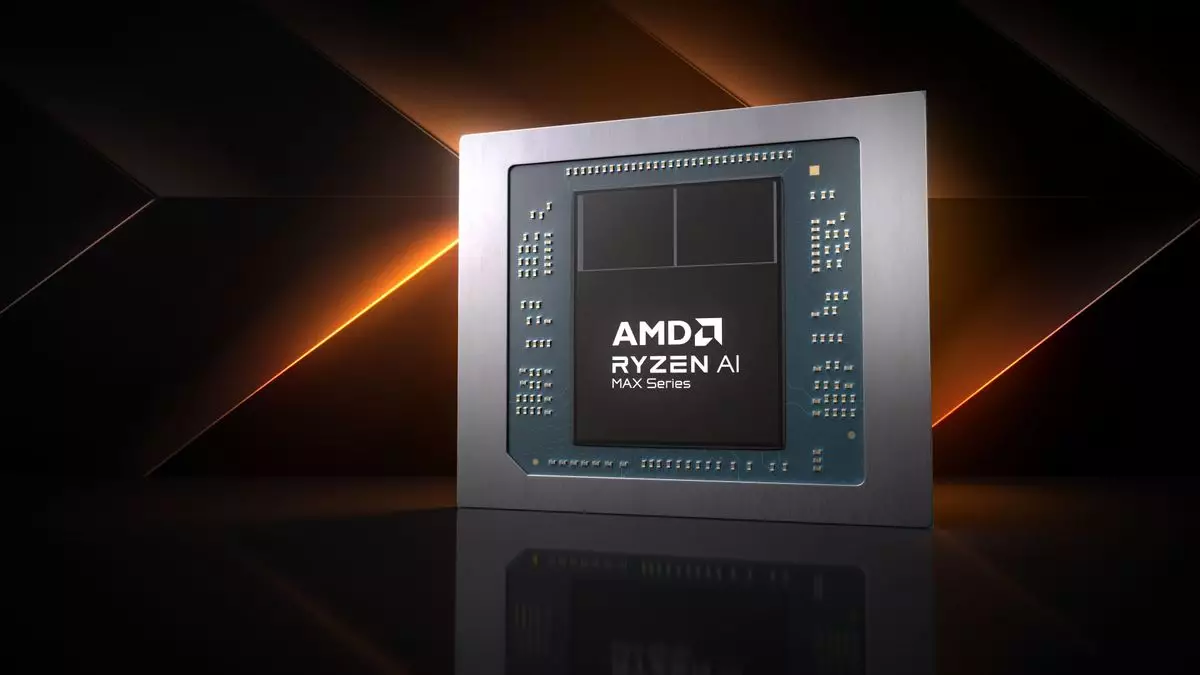AMD’s Strix Halo, poised to be a groundbreaking APU, is beginning to generate buzz with its performance metrics revealed through 3DMark Time Spy. These early benchmarks, while promising, indicate a performance level that may fall short of the industry’s lofty expectations. Having first captured attention during its Geekbench reveal last December, Strix Halo’s latest numbers align with earlier predictions but simultaneously reveal potential shortcomings. The implications of these findings merit further analysis, particularly as fans and professionals alike hope for a powerful advancement in integrated graphics.
Recent posts on the Baidu forums, as highlighted by Wccftech, included images purporting to show the AMD Radeon 8050S integrated GPU, although details suggest that the correct model might actually be the 8060S-equipped AI Max+ 395. Such discrepancies highlight the possible confusion that can arise from pre-launch documentation and testing. Nonetheless, the device registered an impressive GPU score of 10,106 and a CPU score of 5,571 points during testing. To contextualize these figures, this performance appears to place the Strix Halo’s GPU capabilities approximately 2,000 points above the average scores for the RTX 4050 in laptops, placing it tantalizingly close to the RTX 4060 performance tier.
While 3DMark Time Spy offers valuable insights into graphical prowess, it is essential to remain cautious not to treat it as the comprehensive indicator of gaming capabilities. Various gaming applications might present distinct performance characteristics, thus underscoring the necessity for a broader range of benchmarks to adequately assess Strix Halo’s full potential. However, the preliminary findings do suggest that, if sustained, the performance levels could rival those of RTX 4060-equipped laptops, and possibly even manifest in upcoming ASUS gaming tablets.
AMD’s discourse about the Strix Halo APU has been ambitious. Originally, there was optimism suggesting performance akin to an RTX 4070 laptop, which raises expectations that often come with high risk. The reality of these benchmarks indicates that while the APU represents a significant technological leap, it may not meet the bold predictions initially shared. The shift from integrated GPU limitations toward a more powerful framework remains a crucial point of interest for AMD enthusiasts.
Architectural Innovations and Efficiency Considerations
One notable aspect of the Strix Halo APU is its distinct architectural design. Reports indicate that the development process underwent significant iterations — four thorough rounds of refinement — before arriving at its current form. This suggests a level of bespoke engineering that differs from traditional models. Central to this development is the inclusion of Zen 5-based CPU CCDs and an innovative approach to interconnecting them. Such design choices derive from lessons learned during the Ryzen 9 9950X calibrations, particularly regarding the pursuit of improved power efficiency.
Efficient power usage stands out not only as a design goal but as a practical concern for gaming hardware, markedly impacting battery life in laptops. The Strix Halo chip can reportedly scale up to a maximum of 120 watts of configurable power. However, this configurability could also lead to significant performance fluctuations based on the machine’s power settings, thus introducing another layer of complexity to the optimization of gaming laptops utilizing this new APU.
As AMD prepares to launch the Strix Halo, the anticipation surrounding how well it will perform in consumer products is palpable. The mixed reception of its early benchmarks could lead to complex consumer decisions, particularly amongst gamers weighing the performance versus energy consumption debate. The last thing AMD wants is for this powerhouse to deliver a lackluster impact in what has become a highly competitive landscape dominated by both custom and discrete graphics cards.
While the Strix Halo APU showcases exhilarating advancements in integrated graphics performance, the benchmarks suggest that AMD may need to recalibrate its ambitions. As we await further testing across diverse gaming environments, the early indications are promising but hold more questions than answers. Above all, the gaming community remains eager for innovative solutions that enhance not just performance, but also portability and efficiency, which could set the stage for the future of mobile gaming.

